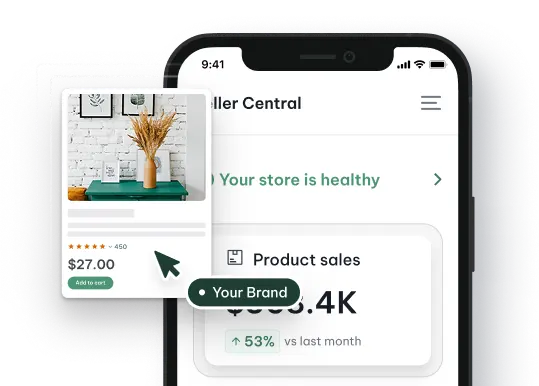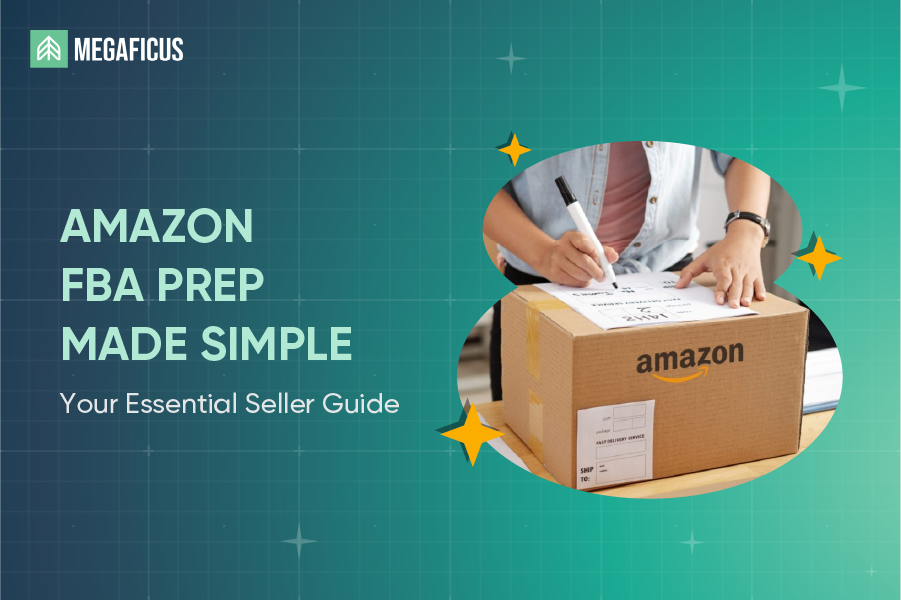Want to master Amazon FBA prep and avoid costly rejections or delays? In this guide, Megaficus walks you through the complete FBA prep process, from quality inspections and labeling requirements to choosing reliable prep services, so your products meet Amazon’s standards and reach customers without complications.
Quick Summary
- Main prep steps: Include receiving inventory at prep centers, quality inspection for defects, organizing products by SKU in storage, applying FNSKU labels with protective packaging, and shipping to designated Amazon fulfillment centers.
- Key requirements: Products need clean packaging, correct FNSKU or UPC labels on flat surfaces, appropriate materials for product type (poly bags for liquids, bubble wrap for fragile items), and category-specific prep like suffocation warnings or temperature control.
- Cost optimization strategies: Negotiate volume discounts (15-30% off for 500+ units monthly), pre-label at suppliers to save $0.40-0.70 per unit, consolidate shipments to reduce freight costs by 40-60%, and choose prep centers in tax-free states for 5-10% savings.
Why does Amazon FBA Prep Matter?
Amazon FBA Prep is the process of preparing your products to meet Amazon’s strict packaging, labeling, and shipping standards before sending them to fulfillment centers, so it’s important because:
- Avoids costly rejections: Improperly prepped inventory gets rejected and returned at your expense.
- Protects products: Proper packaging prevents damage during shipping and storage.
- Prevents account issues: Poor prep leads to customer complaints that hurt your seller metrics.
- Saves money: Avoid Amazon’s penalty fees for non-compliance.
- Gets products selling faster: Correct prep means quicker processing at fulfillment centers.
- Ensures customer satisfaction: Well-prepped items arrive in perfect condition, earning positive reviews.
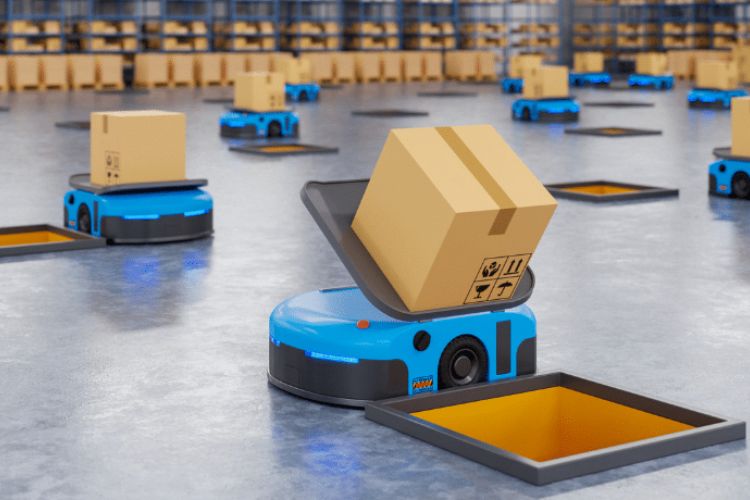
How The Amazon FBA Prep Process Works
Megaficus will walk you through each step of the FBA prep process from receiving inventory to final delivery at Amazon warehouses.
Inventory Receiving
When your products arrive at the prep center from suppliers or manufacturers, staff members immediately verify the shipment details against your order. They check that the correct items and quantities have been delivered, then document the condition of each product.
>>> Read more: Amazon Inventory Management: Ultimate Guide & Top Tools
Quality Inspection & Control
Once the receiving process is complete, each item is moved to the inspection station for a detailed examination. During this stage, inspectors look for scratches, dents, missing components, or manufacturing defects that could violate Amazon’s standards.
If any problems are found, those units are separated and flagged for your review. Meanwhile, products that pass all quality checks proceed directly to the storage area.
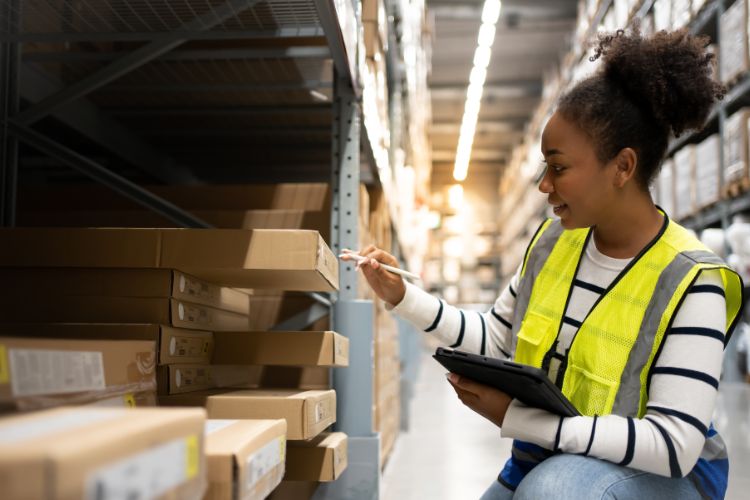
Organizing & Storage
After passing inspection, workers sort the approved items by SKU and assign them to specific warehouse locations. The facility uses inventory management software to track exactly where each product is stored, which speeds up retrieval when prep work begins.
Additionally, fragile or temperature-sensitive items receive specialized storage conditions to preserve their quality until they’re ready for shipment.
Product Labeling & Packing
When it’s time to prepare items for Amazon, workers first apply FNSKU labels or UPC barcodes in the correct positions for scanning. They ensure each label is clear and properly adhered so Amazon’s systems can track the inventory without issues.
Next, they wrap products in bubble wrap, poly bags, or other protective materials based on the item’s fragility and Amazon’s specific requirements. For bundle deals, multiple items are secured together and labeled as one unit to prevent separation during handling.
Delivery To Amazon Warehouses
After all labeling and packaging is finished, workers pack the items into boxes that meet Amazon’s weight and dimension limits. The prep center then creates a detailed shipping plan in Seller Central that directs each box to the appropriate fulfillment center.
Finally, shipping labels are attached, carriers pick up the pallets, and tracking information is uploaded to your account so you can monitor the delivery status in real time.
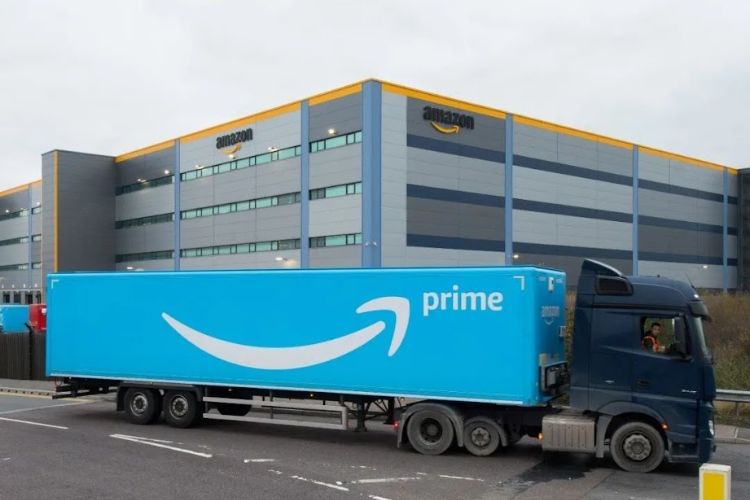
Amazon FBA Prep Requirements And Standards
Megaficus will guide you through Amazon’s preparation standards to ensure your inventory meets all compliance requirements and avoids rejection.
General Preparation Requirements
Amazon applies baseline preparation standards to all products regardless of category, ensuring items arrive safely and ready for customer orders:
- Clean and Intact Packaging: Products must arrive at Amazon’s fulfillment centers in ready-to-ship condition with packaging that protects items during handling and transit. Boxes should be new, sturdy, and free from any previous shipping labels, markings, or damage.
- Labeling: Each unit requires either a UPC barcode or an Amazon-generated FNSKU label placed on a flat, accessible surface of the outer packaging. For poly-bagged items, the label must appear on the outside of the bag where scanners can read it easily without opening the package.
- Barcodes: Amazon tracks inventory through barcodes, so every product must display the correct code that matches its specific SKU. Barcodes need to be clear, scannable, and accurately correspond to the product information listed in Seller Central to avoid processing delays.
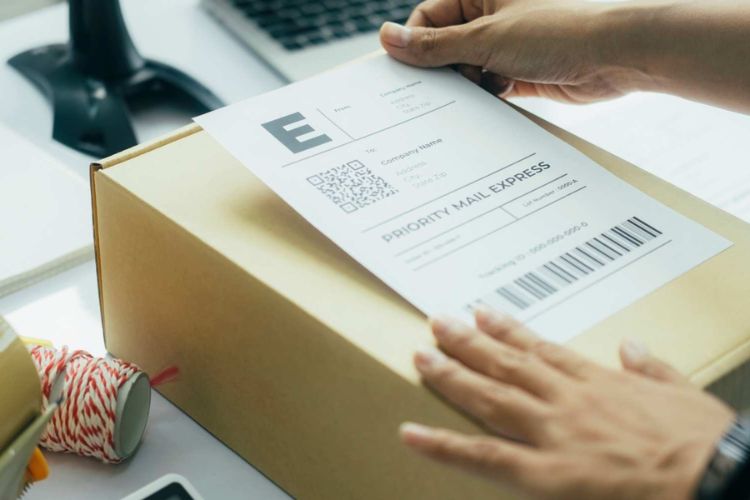
Liquids
All liquid containers must have leak-proof seals and be placed in poly bags with a minimum 3 mil thickness. Additionally, products over 4 ounces require double-bagging to prevent leaks, while bags with openings exceeding 5 inches need suffocation warnings for safety compliance.
Specific Product Requirements
Amazon applies different preparation standards based on product type:
- Loose products: Items without original packaging must be placed in poly bags or secured with removable tape or elastic bands to prevent separation during handling.
- Boxed units: All boxes need six complete sides with secure closure to prevent accidental opening during transit. Any tape used for sealing must not cover barcodes or product labels that Amazon needs to scan.
- Sold as set: Multi-item sets require a visible “Sold as set” or “Ready to ship” label to inform warehouse staff that components must stay together rather than being separated for individual sale.

Fragile Items
Breakable products need at least 2 inches of cushioning material like bubble wrap or foam inserts on all sides. Furthermore, items valued over $100 or highly delicate goods require double-boxing with additional protective fill between the inner and outer cartons to absorb impact during handling.
Clothing, Fabric, And Plush
Textile products and stuffed items must be enclosed in transparent poly bags with a minimum thickness of 1.5 mil or shrink wrap to shield them from dust, moisture, and handling damage.
Each poly bag exceeding 5 inches in opening dimensions must include a suffocation warning label printed in a legible font, typically stating “Warning: To avoid danger of suffocation, keep this plastic bag away from babies and children”.
Perishables
All perishable items must display clear expiration dates on their packaging and maintain specific temperature ranges during transit and storage.
Products with a shelf life of 90 days or less from the time they arrive at Amazon require special handling, and sellers need to create shipping plans that allow fulfillment centers to receive and process these goods within 24-48 hours to prevent spoilage.
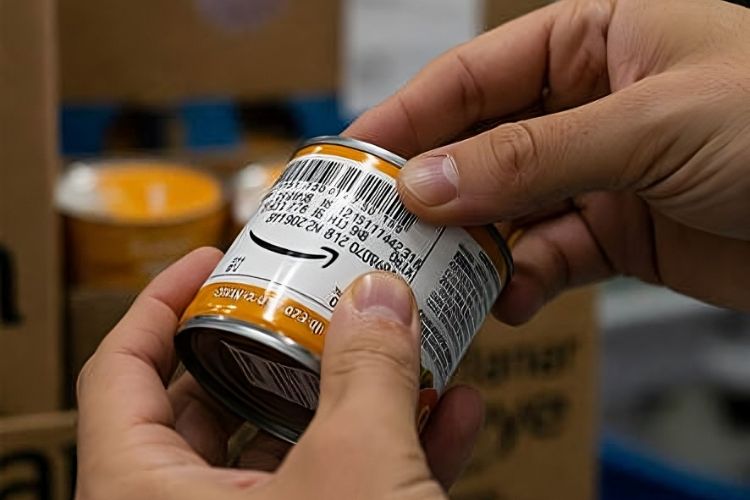
Sharp Items
Products with sharp edges or pointed ends need protective covers like blade guards, tip protectors, or heavy-duty sheaths that prevent punctures.
Furthermore, these items must be placed in rigid boxes rather than poly bags, and the packaging should withstand at least 10 pounds of pressure without allowing sharp parts to pierce through or create hazards for warehouse staff.
Battery-Powered Devices
Items containing batteries must be packaged with power switches secured in the “off” position using tape or plastic ties to prevent accidental activation during handling.
Additionally, lithium batteries require UN3481 or UN3091 labels depending on battery type, and the packaging must include a Class 9 hazard warning if the battery exceeds 100 watt-hours for lithium-ion or 20 grams for lithium metal.
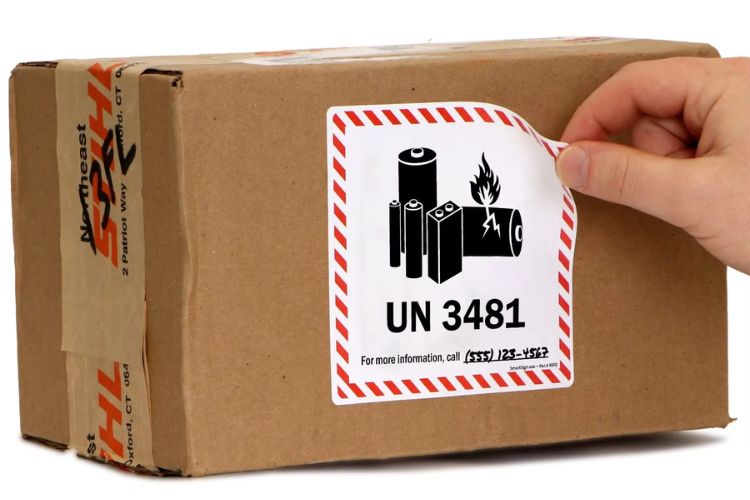
>>> Read more: Amazon FBA Requirements: 6 Key Rules to Stay Compliant
Common Mistakes Sellers Make During FBA Prep
Even experienced sellers make preparation errors that lead to inventory rejections, lost sales, and account penalties from Amazon.
Neglecting To Check Product Condition
Shipping defective products can cause return rates to exceed 10% within 30 days, potentially triggering account warnings from Amazon. To prevent this, inspect each item for visible damage like scratches or dents, test functionality for battery-powered products, and verify that dimensions match your listing details.
Additionally, document inspections with photos and batch numbers to track issues back to suppliers if problems occur later.
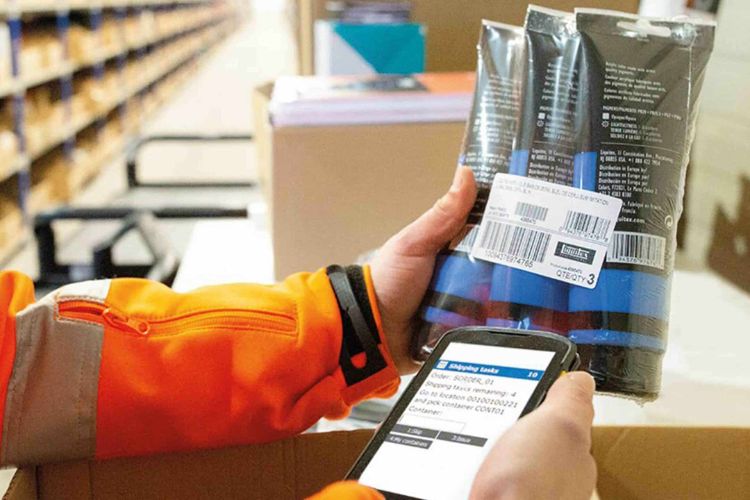
Incorrect Labeling Or Barcode Placement
Labeling errors can cause Amazon to reject up to 100% of a shipment or misplace inventory in their system, leading to lost sales and stranded units. To avoid this, use thermal printers with 300 DPI resolution to ensure barcodes remain scannable after handling.
Additionally, verify that FNSKU labels match your Seller Central listings exactly, place them on flat surfaces at least 1 inch from box edges, and avoid covering them with tape or wrapping materials.
>>> Read more: Amazon FBA Barcode Explained: Types, Rules & How to Get One
Poor Packaging That Results In Product Damage
Damaged products account for approximately 20% of FBA returns and can result in reimbursement denials if Amazon determines the damage occurred before arrival. To prevent this, use corrugated boxes with a minimum 200-pound burst strength rating and fill empty spaces with at least 2 inches of cushioning material on all sides.
Additionally, conduct drop tests from 3 feet onto concrete surfaces to simulate carrier handling, ensuring boxes remain intact and products stay secure after multiple impacts.
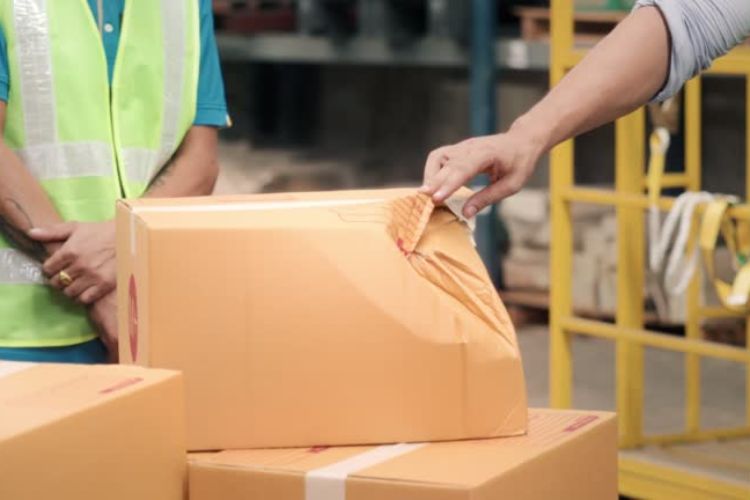
Top 3 Amazon FBA Prep Service Providers
Choosing the right prep center can significantly impact your costs, turnaround times, and overall Amazon FBA success.
eFulfillment Service
Founded in 2001, eFulfillment Service offers over 20 years of FBA prep expertise with flexible solutions and no minimum order requirements. They handle complete prep services, including labeling, quality control, returns management, and inventory replenishment, making them suitable for both small and high-volume Amazon sellers.
- Location: Traverse City, Michigan, USA.
- Major services: Amazon FBA Prep, FNSKU Labeling, Bundling, Poly Bagging, Kitting, Assembly, 3PL Warehousing, and Multi-channel Fulfillment.
- Pricing: Moderate with a transparent fee structure.
- Tax-free state: Yes.
- Best for: Small to medium-sized sellers seeking scalable, personalized FBA prep solutions.
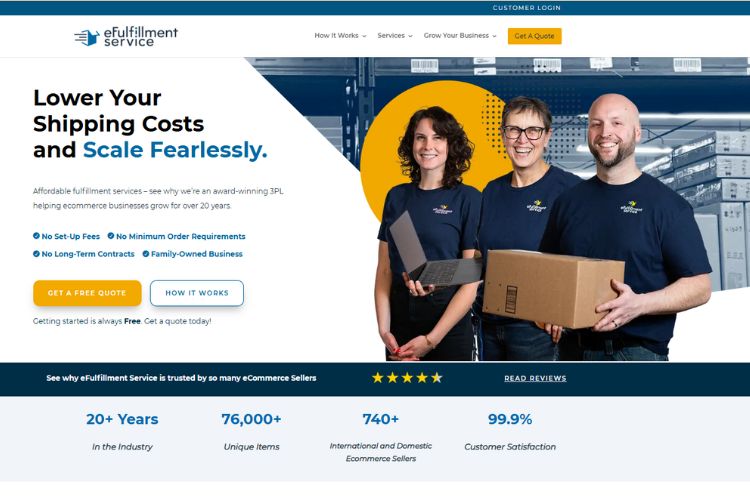
AMZ Prep
AMZ Prep operates a global network serving multiple Amazon marketplaces across the US, Canada, Dubai, and the UK. Their international presence enables cross-border prep services, though managing multiple locations may lead to service inconsistencies compared to smaller, focused prep centers.
- Location: Multiple facilities in the US, Canada, Dubai, and the UK.
- Major Services: Amazon FBA Prep, FNSKU Labeling, Bundling, Kitting, and Multi-marketplace Fulfillment.
- Pricing: $0.50-$1.25 per item for FBA prep services.
- Tax-Free State: No.
- Best For: Medium to large-sized sellers requiring international prep capabilities across multiple Amazon marketplaces.
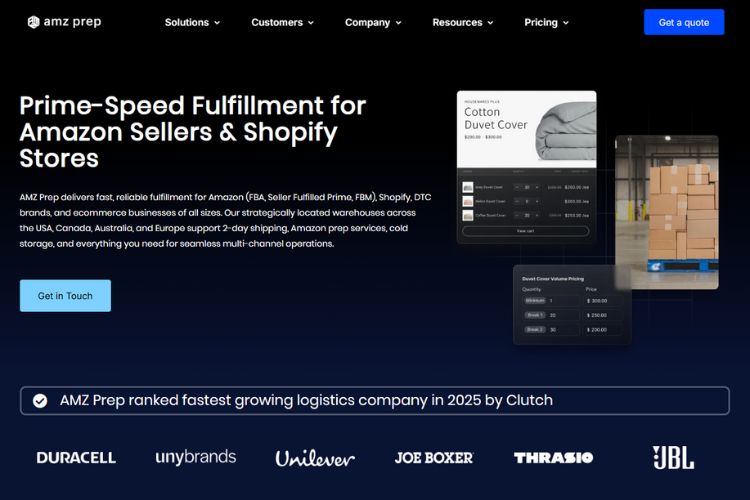
Red Stag Fulfillment
Red Stag Fulfillment operates two strategically located facilities in Tennessee and Utah, providing FBA prep services with full 3PL capabilities. Their dual-location setup offers geographic flexibility for sellers shipping to different Amazon fulfillment centers across the US.
- Location: Sweetwater, Tennessee, and Salt Lake City, Utah, USA.
- Major Services: Amazon FBA Prep, Receiving, Storage, Picking, Packing, Kitting, and Shipping.
- Pricing: Competitive with a transparent fee structure.
- Tax-Free State: No.
- Best For: Medium to large-sized sellers requiring comprehensive 3PL services alongside FBA prep.
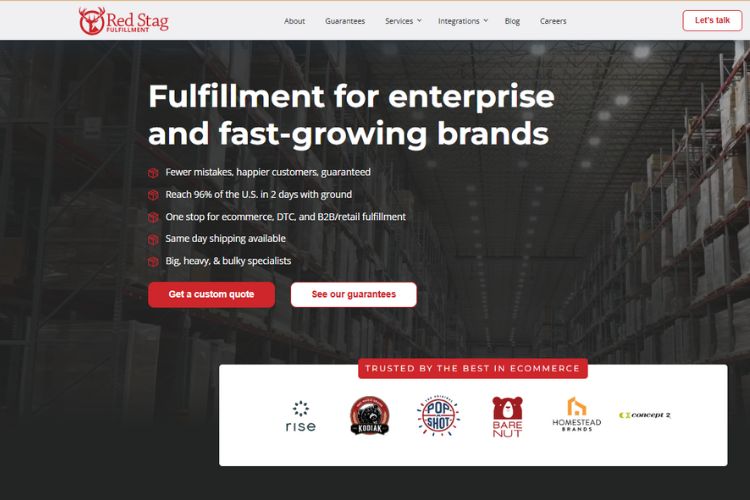
Tips To Optimize Your Amazon FBA Prep Process
Smart sellers use strategic approaches to reduce prep costs, speed up processing times, and scale their FBA operations efficiently.
Negotiate Volume-Based Pricing with Prep Centers
Most prep centers offer tiered pricing based on monthly volume, with discounts ranging from 15 to 30% for sellers shipping over 500 units per month. Sellers should request a custom quote that reflects their expected volume before committing to a provider, then negotiate rates for specific services they use frequently.
Additionally, many prep centers waive setup fees or offer free storage for the first month when sellers sign annual contracts, which can save $200-500 upfront.
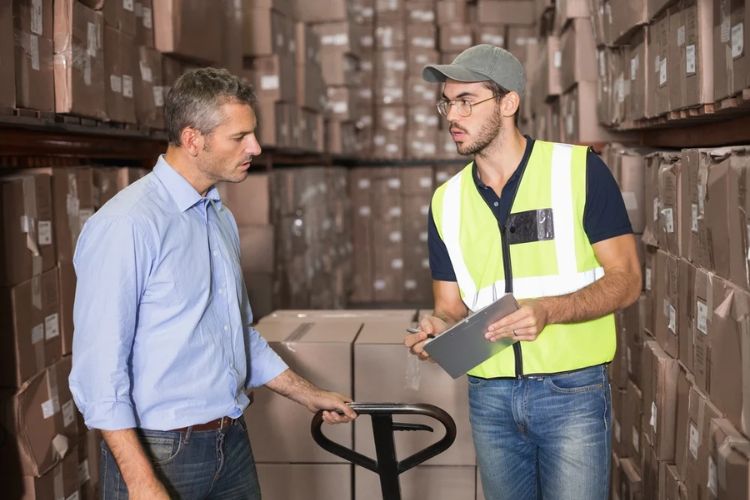
Pre-Label Products At Your Supplier
Arranging FNSKU labeling directly with your manufacturer or supplier eliminates the $0.40-0.70 per unit fee that prep centers charge. Sellers should send their suppliers a detailed labeling guide with placement specifications and barcode files from Seller Central to ensure compliance.
>>> Read more: How to Print and Attach Amazon FBA Box Labels the Right Way
Consolidate Shipments To Reduce Freight Costs
Instead of sending multiple small shipments throughout the month, sellers should batch their inventory into full pallets or LTL shipments to save 40-60% on transportation costs. For example, shipping three separate 150-pound boxes might cost $45 each ($135 total), while consolidating them into one 450-pound pallet could cost only $55-75.
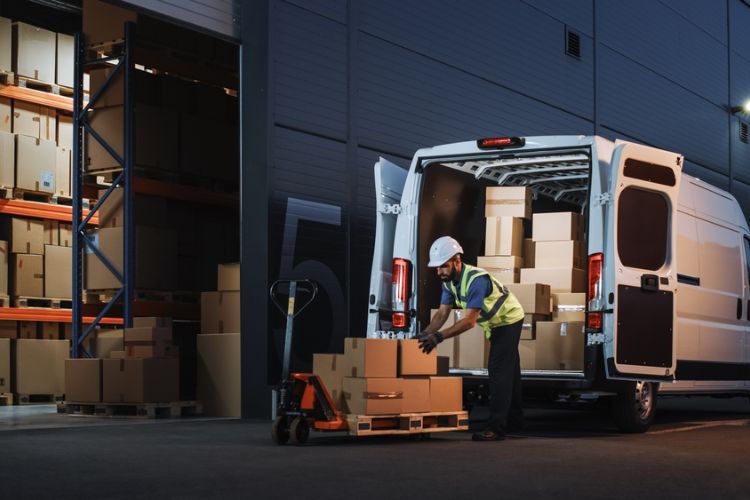
Choose Prep Centers In Tax-Free States
Sellers can eliminate 5-10% in-state sales tax on prep services by selecting prep centers located in Delaware, Montana, New Hampshire, Oregon, or Alaska. For businesses spending $2,000 monthly on prep, this translates to $100-200 in savings each month or $1,200-2,400 annually.
Furthermore, prep centers near major Amazon fulfillment hubs can reduce shipping times and costs to Amazon warehouses.
Use Strategic Storage to Avoid Peak Season Fees
Amazon charges higher storage fees during Q4 (October-December), with rates increasing from $2.40 to $3.60 per cubic foot for standard items. Sellers should store excess inventory at their prep centers during these months and send smaller, more frequent shipments to Amazon as needed.
Many prep centers charge $0.50-1.00 per cubic foot monthly, offering significant savings compared to Amazon’s peak rates while maintaining inventory flexibility.
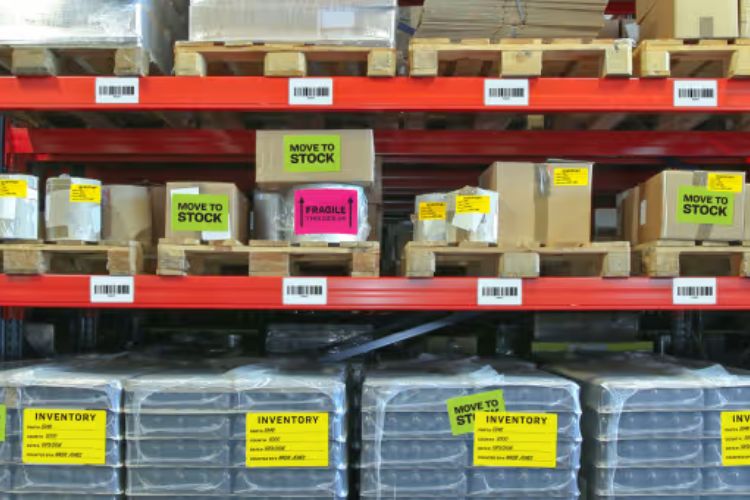
FAQs About Amazon FBA Prep
Yes, Amazon ended its FBA prep and labeling services on January 1, 2026. All products must now arrive fully prepped and labeled, or sellers will face unplanned service fees.
Sellers select prep categories in Seller Central when creating shipping plans. Amazon automatically suggests required prep based on product type, but sellers can manually specify their needs during shipment creation.
Yes. But you’ll need proper equipment like thermal printers and packaging materials, plus thorough knowledge of Amazon’s requirements to avoid compliance issues and potential fees.
Most prep centers complete orders within 2-5 business days, plus 3-8 additional days for shipping to and from Amazon warehouses.
Yes. Many prep centers accept international inventory, though it adds 7-21 days to your timeline and may require customs clearance.
Get Professional Help from Megaficus
Mastering Amazon FBA prep means inspecting products carefully, labeling accurately, and choosing the right preparation strategy to avoid rejections and delays. By following Amazon’s standards and applying smart optimization techniques, sellers can get their inventory shelf-ready faster and scale their business efficiently.
Need expert guidance on Amazon FBA prep? The team at Megaficus is here to help you streamline your fulfillment process and grow with confidence.


